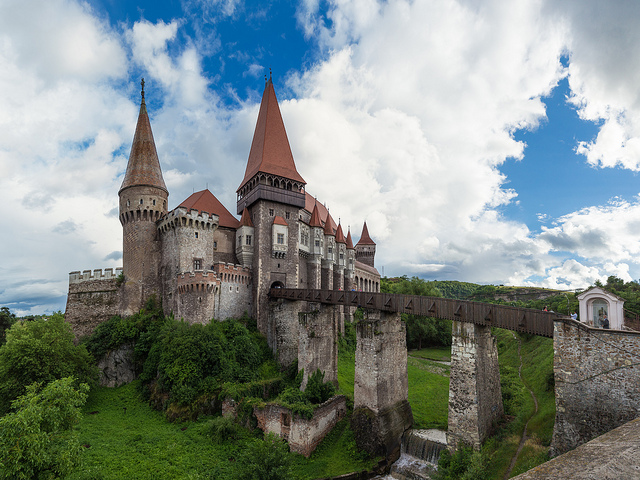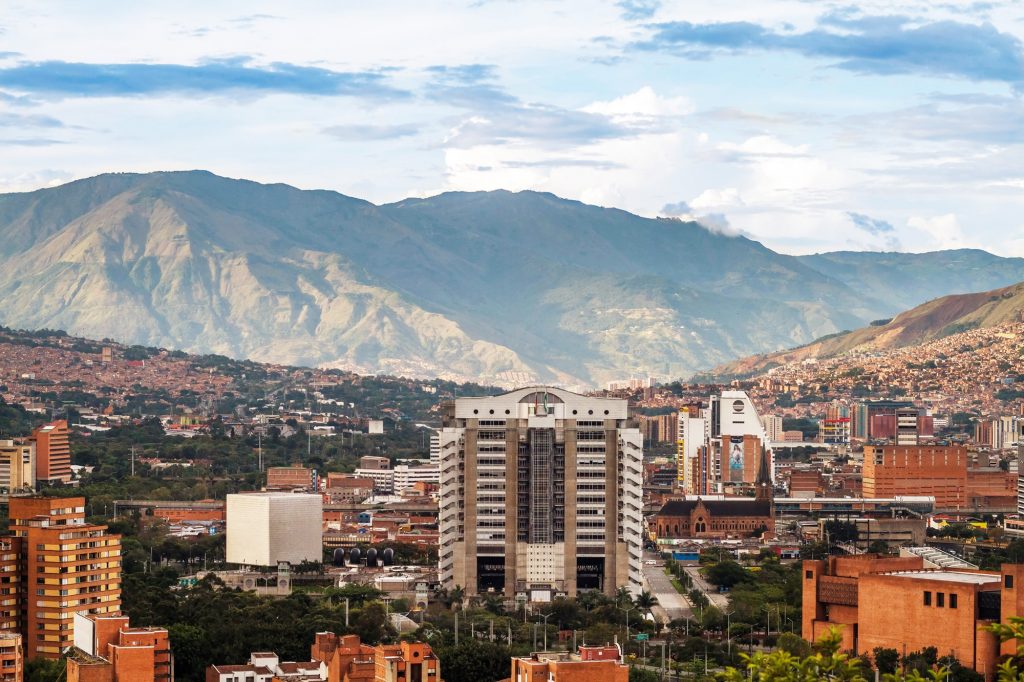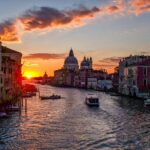Planning A Trip and Not Sure Where to Go?


The Garda Post brings you underrated travel destinations worth visiting.
You can never plan your next holiday too early, since booking a vacation in popular tourist destinations can be quite difficult. The best hotels have no more vacancies, flights are getting more and more expensive and all the research for the best deals is starting to give you grey hairs.
For a change, here is a list of less popular, but definitely worth visiting, destinations.

Romania
Did you know that Romania is dotted with 13th-century UNESCO World Heritage recognised villages? That it’s home to the largest area of contiguous forest in central Europe, filled with brown bears, lynxes, and wolves?
Don’t just go to meet traditional village craftspeople and see the Carpathians’ forested peaks by horseback, but also to experience a culture charmingly stuck in an earlier era, when people organised their lives around the seasons.
Romania is one of the most religious countries in Europe, and the Orthodox Church is omnipresent. You will certainly want to visit some churches and monasteries for their beauty and history, but why not take the chance to experience an Orthodox mass? The congregation is usually standing and it is perfectly normal to show up only briefly during the mass so you can come and go at your leisure without disturbing anyone. Show up at any church on Sunday morning, stand quietly in the back and observe. Please note that while mass is open to all and visitors are most certainly welcomed, communion (the Eucharist) is normally reserved to those baptised Orthodox (regardless of the denomination).
Romania is home to many interesting places to visit including Bucharest, the capital, in which interesting monuments, such as the “House of the People”, overlook medieval and neoclassical neighbourhoods. Take a trip to Brașov, located in south-eastern Transylvania, its main attractions are the well-kept medieval downtown, the nearby luxury resort of Poiana Braşov and the Bran (“Dracula’s”) Castle.
For those on a culture trip a visit to Sibiu may be of interest. It is one of the most beautiful cities in Transylvania, it has the best preserved historical sites in the country, and hosts many museums and exhibitions. Sibiu is close to the stunning Făgăraş mountains, for which reasons it became the 2007 European Capital of Culture.
Of course, there are many more interesting destinations, like the Saxon villages with fortified churches in Transylvania; the Danube Delta; the Alba Iulia, that lets you travel back in time along two millenniums on The Route of the Three Fortifications, the Black Sea resorts.

Zimbabwe
A lot of people don’t really explore Africa. While in South America or Southeast Asia, people might go on cross continent journeys, but in Africa they might only visit two or three countries. Which is a shame, since there are many countries across Africa that are incredibly unexplored destinations.
Zimbabwe is a captivating land in southern Africa, and unquestionably one of the most underrated countries in the continent.
You can explore Mana Pools National Park and Matobo National Park to spot zebras and herds of elephants escorted by the park rangers and the Zimbabwean army and don’t miss the fascinating Victoria Falls, the world’s largest sheet of falling water and one of the most unbelievable places on Earth. It’s known for its wildlife but not many people think of it for other kinds of adventures.
For culture, it’s possible to visit the 2000-year-old paintings inside the Matobo Hills. This incredible place has more than 3000 registered rock art sites. The country also has fascinating history. The Great Zimbabwe National Monument, the 11th-century ruins of ‘the capital of the Queen of Sheba,’ is one of those places that make you travel back in time. Hike up the hill to have a fabulous aerial view of Great Enclosure and Valley Complex.

Zalipie, Poland
The secluded village of Zalipie in southeastern Poland is home to a charming tradition. Over a century ago the women of the village began to paint their houses: however, it was not the single, uniform color one might expect from a traditional and conservative society. The village, through the intricate and vibrant paintwork of its womenfolk, bloomed.
Although no one is completely sure how and when this tradition began, it dates from when the smoke from stoves escaped through little more than a hole in the ceiling of the house. Women would paint over the spots of soot with whitewash. Yet the spots would still be partially visible and it is believed that the women, in order for their house to appear immaculate for religious festivals, took to covering the remnants of soot stains with paintings of flowers. Once modern cooking and better ventilation came into practice, these cover-ups were no longer necessary.
Yet instead the flower patterns became gradually more and more sophisticated.
To this day, the village hosts an annual competition held every year since 1948 around the feast of Corpus Christi. Local painters (a few men now, but still predominantly women) create their own intricate floral arrangements on the walls of the houses as well as touching up patterns from previous years. The practice has spread beyond the walls of the cottages too – it seems in Zalipie any immovable object is potentially the site for a florescent flourish.

Hoi An, Vietnam
Hoi An has the beautiful beaches, stunning sights, and interesting history you want in a vacation destination, but it really has so much more. For one, there’s a great scene for custom-made clothing, so you can leave with some unique, reasonably priced pieces. In addition, the food is outstanding, making every meal a highlight. And finally, the people are incredibly warm and welcoming.
Graceful, historic Hoi An is Vietnam’s most atmospheric and delightful town. Once a major port, it boasts the grand architecture and beguiling riverside setting that befits its heritage, and the 21st-century curses of traffic and pollution are almost entirely absent. The Old Town of Hoi An is listed as a UNESCO World Heritage Site.
The face of the Old Town has preserved its incredible legacy of tottering Japanese merchant houses, Chinese temples and ancient tea warehouses – though, of course, residents and rice fields have been gradually replaced by tourist businesses. Lounge bars, boutique hotels, travel agents and a glut of tailor shops are very much part of the scene here.
To enter most of the main attractions in the Old Town (i.e. the handful of buildings that aren’t shops) you require a ticket, which is sold at various kiosks. You certainly do not require a ticket just to walk the streets. But it can seem that way since the main entrance to the Old Town is the covered bridge, which being one of the attractions does require the ticket.
Once purchased, the old town ticket includes five coupons that can be used to enter five attractions: museums, old houses, assembly halls, the handicraft workshop (and traditional music show) or the traditional theatre and either the Japanese Covered Bridge or the Quan Cong Temple. Tickets are sold at various entry points into the Old Town, including Hai Ba Trung Street, and also at some of the attractions, including the Cantonese Assembly Hall. The city requests that visitors dress “decently” while visiting sites in the Old Town.

Medellín, Colombia
Once a site of conflict and unrest, Medellín has cleaned up its act in recent years. It is filled with amazing culture, beautiful street art, and unreal nightlife. Tasty street food can be found throughout the city as well. For thrill seekers, Medellín is also building a reputation as a major hub for paragliding.
Medellín packs the punch of a city twice its size. Situated in a narrow valley, the city’s skyline reaches for the heavens, setting high-rise apartment and office buildings against a backdrop of jagged peaks in every direction. Its pleasant climate gives the city its nickname – the City of Eternal Spring – and the moderate temperatures put a spring in the locals’ steps, at work and at play.
The city sprawls north and south along the valley floor. Slums hug the upper reaches of the hills. True to its paisa (people of Antioquia) roots, Medellín affects an indifference to the rest of Colombia, and puts on metropolitan airs – the traffic officers wear Italian-style round, boxy hats; many discos prefer techno or reggaeton to salsa and vallenato.
Visit Pueblito Paisa, a reconstruction of a typical but tiny Antioquia village. It’s located on top of el Cerro Nutibara and has a pleasant view of the city. It’s within walking distance of the metro station “Industriales,” but as the walk to the top requires hiking uphill for a while, visitors might find that a taxi ride is a smart choice.
Los Alumbrados, the Christmas lights decorating Medellin, make it the most beautiful Latin American city for the holidays. The lights stay up from November 30, 2016 to mid-January 2017. The most impressive parts will be around Calle Carabobo north, other important avenues of the downtown and cerro Nutibara. Large statues made of lights can be found throughout the city.
The Metropolitan Cathedral, which holds the record as one of the buildings in the world with the most bricks – over 1.1 million – is located next to Bolivar Park in the city center.

The Azores, Portugal
The Azores is one of the two autonomous regions of Portugal, an archipelago composed of nine volcanic islands in the North Atlantic Ocean about 1,360km west of continental Portugal. It is a group of nine islands in the middle of the Atlantic Ocean, which blend an island lifestyle and climate with European charm, language, and architecture. The vegetation, views and nature in general are simply breathtaking.
Visit the Lagoa das Sete Cidades, a beautiful hour glass green and blue body of water northwest of Ponta Delgada. The locals tell many stories, myths and legends about this lake. Or the Lagoa das Furnas, a lake with steam vents, mud pots and geysers, where locals cook food in earth ovens available in picnic areas.
On Pico Island you can climb the mountain, 2351 meters above sea level. It is the tallest mountain in Portugal. Ideally you climb the mountain in the afternoon so you can see the sunrise when you are on top. The hike to the summit usually takes about 2 to 3 hours.
If you feel like visiting Terceira Island, make sure to see UNESCO’s Angra do Heroismo, a charming XVIII century little city full of shops, cafes and bars. Terceira is inherently the happiest Island, and special events occur all year long. Get a tour around the island, visit a volcano (Algar do Carvão), a cave (Gruta do Natal) or walk through any of the dozens Trilhos (official hiking trails.
What all the islands have in common is their excellent local cuisine. Fresh fish is available every day and another specialty are the local grass-fed beef. There is a “meat and potatoes” mentality when it comes to the cuisine and vegetables can sometimes be hard to come by. Sao Jorge is famous for its cheese and must be tried. Fresh pineapple from Sao Miguel is also unbelievably good.

Kyrgyzstan
Kyrgyzstan is a South-Central Asian Union country of incredible natural beauty and proud nomadic traditions. Landlocked and mountainous, it borders Kazakhstan to the north, Uzbekistan to the west, Tajikistan to the southwest and China to the southeast. Annexed by Russia in 1876, it achieved independence from the Soviet Union in 1991. It has the most liberal tourist visa policy in Central Asia and one of the more progressive post-Soviet governments in the region.
In summer, the alpine peaks and valleys turn into an intrepid playground for mountain biking, rafting, horse riding and trekking, allowing people to travel for days or even weeks on incredible expeditions. When it snows the mountains open up for all imaginable winter sports.
Travellers can immerse themselves in the unique nomadic culture, doing traditional yurt stays and learning all about the hospitable Kyrgyz people. Wander around Osh Bazaar – a traditional Eastern market in Bishkek selling everything from spices to dishwashers. Or buy cheap Chinese goods in Dordoi Bazaar – The largest market in Central Asia, situated 20 minutes north of Bishkek.
Swim, sail and sunbathe in Issyk Kul – The world’s second biggest high-altitude Mountain Lake, or hike or climb in Altyn Arashan, a secluded valley and two-hour jeep ride from Karakol. For another kind of adventure try a three-day horseback riding tour near the Toktogul.

Nevis
Nevis is a Caribbean destination that few people can pinpoint on a map, but it boasts a unique island charm that sets it apart from its more frequented neighbours. Unspoilt, relaxed and easygoing, Nevis has wide open spaces and a rich cultural heritage that implore visitors to ditch the clichéd holiday itinerary of all-inclusive sea, sand and sun, and instead immerse themselves in the natural world.
There’s nothing brash about this sweet and unhurried island, whose blissfully uncrowded beaches fringe a forested interior that rises to majestic, often cloud-shrouded, Mt Nevis (3182ft). The coastal lowlands support bougainvillea, hibiscus and other flowering bushes that attract numerous hummingbirds. It’s this lush landscape that makes Nevis so popular with bikers, hikers, birders and other nature and outdoor fans. History buffs, meanwhile, can snoop around the legacy of Horatio Nelson and Alexander Hamilton.
Everything from hiking and cycling to sailing, scuba diving and windsurfing can be enjoyed here year-round.
Most visitors arrive by sea, crossing the two-mile Narrows that separates Nevis from its mountainous sister island, St Kitts, which is also worth some of your time. Where you stay is largely a choice between beach or hills − Nevis has several characterful plantation-style hotels that you should at least visit for lunch, afternoon tea or dinner if you do not check in.
The capital, Charlestown, is a small, friendly affair dotted with Georgian buildings and 19th-century churches, and there are enjoyable days to be had seeking out the island’s old sugar estates and walking or riding in the forests inland. Other diversions include a top-class golf course, mountain biking, diving and some good Caribbean restaurants.
For most travellers, though, it is the atmosphere on Nevis that is most compelling. Safe, friendly and welcoming, this is an island where there are no all-inclusive resorts, or visits from cruise ships with 2,000-plus passengers to disgorge. Fanned by trade winds, the climate is exceptionally inviting, and for once the hotels aren’t all crammed together on the beach. All come with large and luxuriant gardens, or groves of lofty coconut palms, while inland the hills are a fiesta of mango and flamboyant trees. On Nevis, the romance of the Caribbean still rings true.
By Catherina Arndt.






